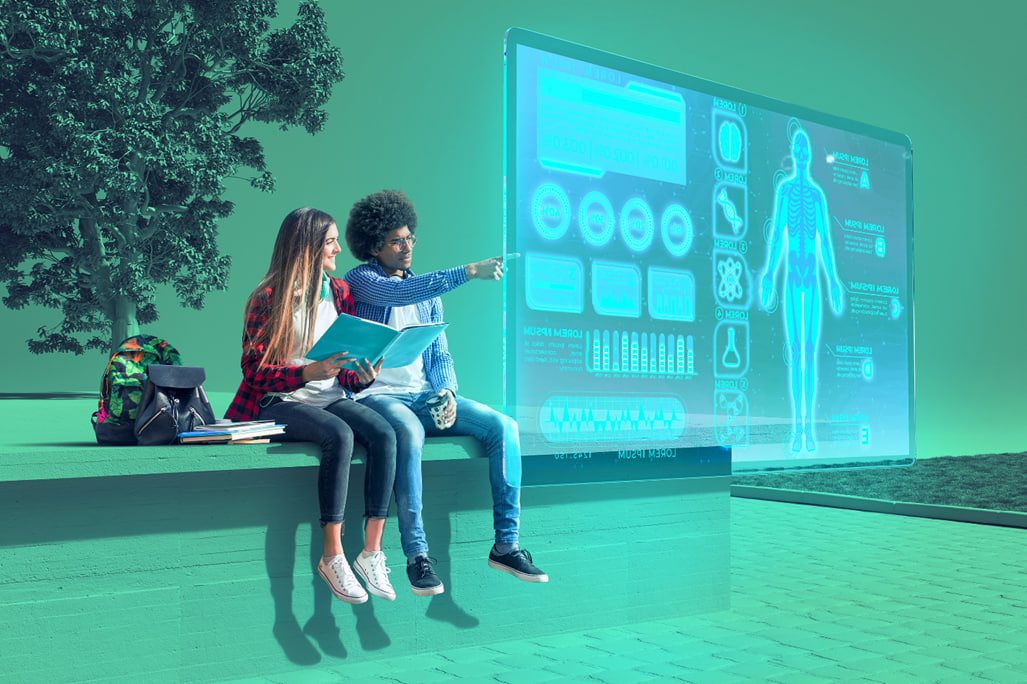Introduction
Artificial Intelligence (AI) has made significant advancements in various industries, including education. This technology has the potential to transform the way we teach and learn, bringing new opportunities and challenges to the table.

The Rise of Artificial Intelligence in Education
In recent years, AI has been increasingly integrated into educational settings. AI-powered tools and platforms are being used to personalize learning experiences, provide real-time feedback, and enhance administrative tasks. This has the potential to revolutionize the education system, making it more accessible, interactive, and effective for students of all ages.
Benefits and challenges of AI in education
On one hand, AI offers numerous benefits to education. It can provide personalized learning paths, adapt to individual student needs, and offer instant feedback. AI-powered tools can also automate administrative tasks, freeing up valuable time for educators. However, there are also challenges to consider, such as ensuring data privacy and security, addressing ethical concerns, and ensuring that AI systems are unbiased and inclusive.
Overall, the integration of AI in education holds great promise. By leveraging the power of AI technology, we can create a more engaging, personalized, and efficient learning environment that prepares students for the challenges of the future. However, it is important to navigate the challenges and ensure that AI is implemented in an ethical and inclusive manner.
Opportunities of Artificial Intelligence in Education
Artificial Intelligence (AI) has the potential to revolutionize education by providing unique opportunities and overcoming challenges.
Enhancing personalized learning experiences
AI can analyze vast amounts of data on student performance, learning styles, and interests to create personalized learning experiences. It can adapt content and teaching methods in real time, catering to individual needs and strengths. This personalized approach maximizes learning outcomes and student engagement.
Improving student engagement and motivation
AI-powered educational tools can incorporate gamification and interactive elements, making learning more fun and engaging. Virtual reality and augmented reality technologies can create immersive learning environments, enhancing student motivation and deepening understanding.
Efficient administrative tasks and resource management
AI can automate administrative tasks, such as grading, scheduling, and data analysis, freeing up educators’ time for more impactful teaching and mentoring. Additionally, AI can optimize resource allocation, ensuring that students have access to appropriate learning materials, support, and interventions.
By embracing the opportunities that AI offers, educators can create a more personalized and engaging learning environment while streamlining administrative processes. However, it is crucial to address the ethical considerations and potential challenges associated with the use of AI in education to ensure its responsible and equitable implementation.
Challenges and Considerations of AI in Education
Ethical concerns and privacy issues
As AI technology becomes more prevalent in educational settings, there are growing concerns about the ethical implications and privacy issues that come with it. For example, there may be questions about the use of personal data and how it is collected, stored, and used by AI systems. Ensuring that proper safeguards are in place to protect student privacy and address potential biases in AI algorithms is crucial.
Ensuring AI is used as a complement, not a replacement.
While AI has the potential to enhance educational experiences, it is essential to remember that it should never replace human teachers or personalized instruction. AI should be used as a tool to support teachers, provide personalized learning experiences, and offer additional resources. Striking the right balance between human interaction and AI technology is vital to ensure that students receive a well-rounded education.
Addressing the technological divide and accessibility
One of the key challenges of implementing AI in education is ensuring equitable access to technology and resources. Not all schools or students have equal access to the necessary infrastructure or devices required for AI-powered educational tools. Bridging the technological divide and promoting accessibility for all students, regardless of socioeconomic background, is crucial to avoid exacerbating educational inequalities and ensure that AI benefits all learners.
By considering these challenges and actively addressing them, educators can harness the power of AI technology to create a more inclusive and effective learning environment for students.
Best Practices and Successful AI Implementation in Education
Integration of AI with traditional teaching methods
Integrating AI technology with traditional teaching methods can enhance the learning experience for students. AI can be used to provide personalized learning pathways, adaptive assessments, and real-time feedback to students. This allows educators to tailor instruction to individual student needs, ensuring better comprehension and engagement. Additionally, AI can automate administrative tasks, freeing up teachers’ time to focus on instruction and student support. By incorporating AI tools seamlessly into the existing curriculum, educators can create a blended learning environment that combines the best of both worlds.
Providing proper training and support for educators
To successfully implement AI in education, it is crucial to provide proper training and support for educators. Many teachers may be unfamiliar with AI technology and may require guidance on how to effectively use AI tools in the classroom. Training programs should be designed to help teachers understand the potential benefits and limitations of AI in education and provide them with strategies for integrating AI into their teaching practices. Ongoing support should also be available to address any concerns or challenges that arise during the implementation process. By equipping educators with the necessary knowledge and support, schools can ensure a successful and sustainable AI implementation in education.
Conclusion
A survey conducted in 2020 found that 86% of K-12 school leaders in the United States believed that AI would be a crucial part of their institution’s strategy in the coming years. Schools were increasingly using AI for tasks such as data analysis to identify struggling students, personalized learning, and automating administrative tasks.
Artificial Intelligence (AI) is transforming the education industry, presenting both opportunities and challenges. It has the potential to enhance personalized learning, improve student engagement, and provide valuable data insights for educators. However, there are concerns about privacy, equity, and the possible replacement of human instructors.
Summary of the opportunities and challenges of AI in education
The opportunities for AI in education include adaptive learning platforms, virtual tutors, and intelligent grading systems. These tools can tailor instruction to each student’s needs, provide instant feedback, and free up teachers’ time. Challenges include ensuring data privacy, addressing the “digital divide” that may limit access to AI tools, and maintaining a balance between technology and human interaction.
Importance of a balanced approach to AI implementation
To fully benefit from AI in education, a balanced approach is crucial. It is essential to combine the strengths of AI technology with human expertise. Educators should be trained to effectively integrate AI tools into their teaching strategies, while also prioritizing ethical considerations and student well-being.
Looking ahead to the transformative potential of AI in education
Despite the challenges, AI has the potential to revolutionize education. It can create inclusive learning experiences, provide personalized support to students with special needs, and bridge educational gaps in underserved communities. By embracing AI responsibly and thoughtfully, education can be more engaging, effective, and accessible for all learners.

